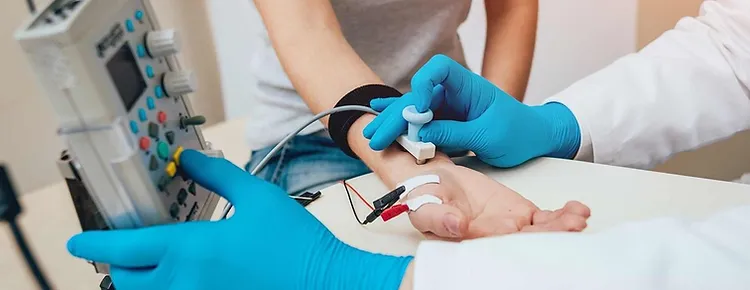We offer full medical consultations followed by electrodiagnostic studies for the evaluation of neuromuscular symptoms. As a form of functional testing, this is complimentary to diagnostic imaging, with greater specificity.
Read more:

When disease of the peripheral nervous system is suspected, electrodiagnostics can help determine:
And assist in:
| "Negative" Symptoms | "Positive" Symptoms | |
|---|---|---|
| Moter Nerve |
|
|
| Sensory Nerve , Large Fiber |
|
|
| Sensory Nerve , small fiber |
|
|
Advantages
Limiting Factors